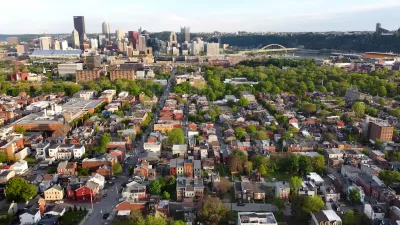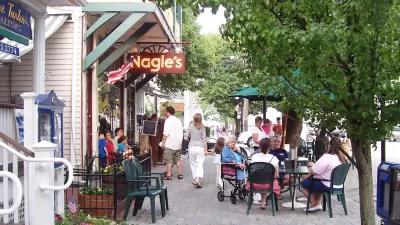As the post-recession economy continues to plod along, those in the non-profit sector continue to face stiff funding competition. Organizations furthering the smart growth/new urbanism cause may find this to be particularly frustrating, as re-working how and where America builds has never been so important.
As the post-recession economy continues to plod along, those in the non-profit sector continue to face stiff funding competition. Organizations furthering the smart growth/new urbanism cause may find this to be particularly frustrating, as re-working how and where America builds has never been so important.
Fortunately, The Fund for the Environment and Urban Life-a relatively new private foundation-has embraced those organizations who pursue a more sustainable built environment. Indeed, it's rare to find an environmental funder that so clearly supports urbanism as part of the solution to environmental degradation.
Established in 2007, the Fund's formal name is The Oram Foundation Inc., which was established by Richard Oram, a 30-year veteran of the public transit industry and pioneer of the tax-free "transit benefit" field (how many planners are fortunate enough to become funders?!).
I first learned about the Fund for the Environment and Urban Life in 2008 while working with the Miami-based Center for Applied Transect Studies (CATS) on the initial development of a middle school urban planning curriculum inspired by the "The Wacker Manual," as used 100 years ago in Chicago. At that time, Oram's organization primarily supported recycling and other smaller scale city greening projects. Yet, CATS applied and received funding from Oram's organization. Soon thereafter, the Fund made a conscious effort to focus on broader "sustainable urban development" initiatives. Indeed, over the next four years the Fund will allocate half of its annual resources to new urbanist and smart growth projects.
When I checked in with Oram recently, he told me that the Fund has already supported three projects of this kind, and is in the process of funding four more. The Congress for New Urbanism, an example of the former, received support in 2009 from The Fund for its strategic marketing activities. Additionally, Oram's organization became a lead sponsor of the American Makeover project, which is producing a series of six videos to promote new urbanism; building on the popular "Built to Last" video released in 2009 (109,000+ views and counting).
The first new video within the American Makeover series is "Sprawlanta,"which was released in conjunction with the CNU's 18th annual event held in Atlanta this past spring.
Most recently, the Fund added four new projects to its growing roster of supported smart growth initiatives. One, in coordination with the US Green Building Council and Pace University's Land Use Law Center, will develop LEED-ND planning tools. Another, with Transportation Alternatives, is seeking national exposure for the street and pedestrian improvements recently put in place in New York City, tentatively titled: If you can green it here you can green it anywhere. Another funded project is helping Streetfilms produce a videoseries, "Ten Ways to Reduce Traffic." Last, CEO's for Cities has received support to promote walkability in its communication materials, which will include another book by Jeff Speck.
If any of the above sound like a project your non-profit is trying to launch, you might consider learning more about the Fund for the Environment and Urban Life.

Study: Maui’s Plan to Convert Vacation Rentals to Long-Term Housing Could Cause Nearly $1 Billion Economic Loss
The plan would reduce visitor accommodation by 25,% resulting in 1,900 jobs lost.

Alabama: Trump Terminates Settlements for Black Communities Harmed By Raw Sewage
Trump deemed the landmark civil rights agreement “illegal DEI and environmental justice policy.”

North Texas Transit Leaders Tout Benefits of TOD for Growing Region
At a summit focused on transit-oriented development, policymakers discussed how North Texas’ expanded light rail system can serve as a tool for economic growth.

Virginia Law Allows Judges to Mandate Speed Limiters
The law could set a new precedent for speed limiting tech on U.S. vehicles.

Comment: EPA Cuts will Send Atlanta Back to Eye-burning Ozone, Lung-damaging Smog, and Raw Sewage in the Chattahoochee River
A veteran political journalist takes stock of the hard-earned ground Georgia stands to lose with slashed environmental protection.

How Community Science Connects People, Parks, and Biodiversity
Community science engages people of all backgrounds in documenting local biodiversity, strengthening connections to nature, and contributing to global efforts like the City Nature Challenge to build a more inclusive and resilient future.
Urban Design for Planners 1: Software Tools
This six-course series explores essential urban design concepts using open source software and equips planners with the tools they need to participate fully in the urban design process.
Planning for Universal Design
Learn the tools for implementing Universal Design in planning regulations.
City of Santa Clarita
Ascent Environmental
Institute for Housing and Urban Development Studies (IHS)
City of Grandview
Harvard GSD Executive Education
Toledo-Lucas County Plan Commissions
Salt Lake City
NYU Wagner Graduate School of Public Service





























